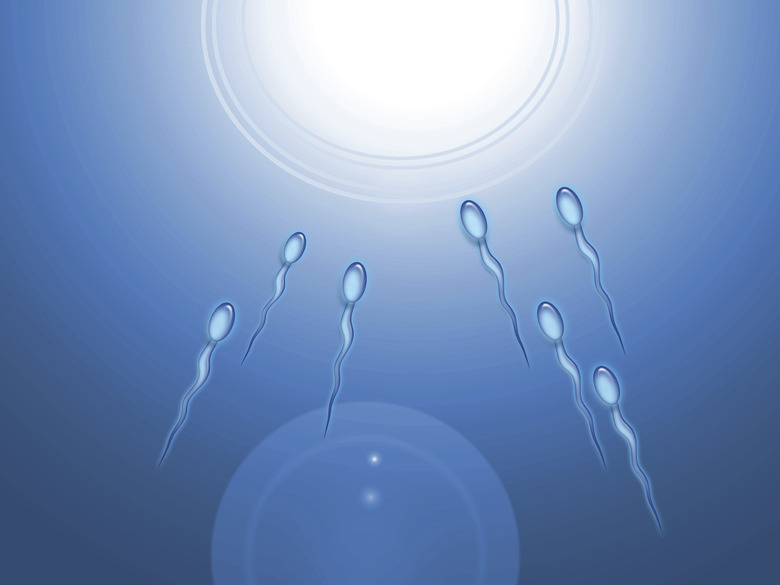The Location Of Cilia And Flagella
Most single-celled microorganisms need to move around. To make that possible, they rely on external motile appendages, such as cilia and flagella. These structures also play important roles in multicellular organisms, including humans, serving as gametes or working to move cells or cell contents. Cilia play such important roles in the human body that defects in their function can cause disease.
What Are Cilia and Flagella?
What Are Cilia and Flagella?
There are a few appendages or projections used by single-celled organisms for locomotion. Two of the most common are cilia and flagella.
Cilia are short and usually described as similar to hairs or eyelashes. Motile cilia generally occur in groups while non-motile cilia often show up singly. Cilia location can vary with some single-celled organisms completely surrounded by them.
Cilia make motions described as either whip-like or similar to the breast stroke used by swimmers. Each cilium moves slightly out of phase with its neighbors such that a group of cilia make wave-like movements all together.
Flagella look like tails and tend to show up singly. The most common flagella location is at the back side of a single-celled organism or cell – sort of like an outboard motor attached at the back of a speed boat. The motions made by flagella are smooth and wave-like among eukaryotes. Prokaryotes, on the other hand, whip their flagella like a rotating propeller.
Structures and Functions
Structures and Functions
The structures of cilia and flagella are actually pretty similar. Both of these motile appendages attach to the cell via a basal body (sometimes called a kinetosome). They are also both made up of microtubules, which are tubular proteins that give the whole cell structure in the form of a cytoskeleton.
The central portion of the cilium or flagellum is the axoneme, which contains two pairs of microtubules. Nine more pairs of microtubules radiate out from the axoneme and form an outer ring. This is called a nine-plus-two arrangement and makes it so that a cross-section of either a cilium or flagellum looks a bit like a wagon wheel. The spokes of the wagon wheel are dynein motor proteins, which make movement possible by converting stored chemical energy (called ATP).
When it comes to flagella, those found on prokaryotes such as bacteria are a bit different. They are helical and contain another protein called flagellin. These structural differences may explain why prokaryotic flagella act like rotating propellers rather than making wave-like motions as eukaryotic flagella do. This motion can be clockwise or counter clockwise.
Cilia and Flagella in the Human Body
Cilia and Flagella in the Human Body
While the motile appendages that belong to microorganisms are certainly interesting, you might wonder if there are cilia or flagella in your own body. You may even wonder which structure in the human body will use flagella to move.
The only human cells that have flagella are gametes – that is, sperm cells. Human spermatozoan cells look somewhat like tadpoles. They have bulbous heads that contain genetic information and an enzyme that helps the sperm cell fuse with the egg cell. They also have long, whipping tails – flagella – that help them navigate toward that egg.
Cilia are much more common in the human body. In fact, you can find them on the surfaces of almost all mammalian cells. Motile cilia are particularly important for proper function of the respiratory system since the lungs and respiratory tract rely on the rhythmic motion of cilia to clear debris and mucus from the airways. These cilia also play important roles in the middle ear and the female reproductive tract, where they help move sperm cells toward the egg cell.
In fact, cilia are so important in the human body that genetic defects in motile and non-motile cilia cause disease in humans, called ciliopathies. These may affect the basal bodies that anchor the cilia to the cell or decrease cilia function in some other way. Syndromes associated with defects in cilia functioning can cause:
- blindness
- chronic respiratory
infections
- deafness
- diabetes
- heart disease
- infertility
- kidney disease
Cite This Article
MLA
Mayer, Melissa. "The Location Of Cilia And Flagella" sciencing.com, https://www.sciencing.com/the-location-of-cilia-and-flagella-12075420/. 17 June 2019.
APA
Mayer, Melissa. (2019, June 17). The Location Of Cilia And Flagella. sciencing.com. Retrieved from https://www.sciencing.com/the-location-of-cilia-and-flagella-12075420/
Chicago
Mayer, Melissa. The Location Of Cilia And Flagella last modified March 24, 2022. https://www.sciencing.com/the-location-of-cilia-and-flagella-12075420/
